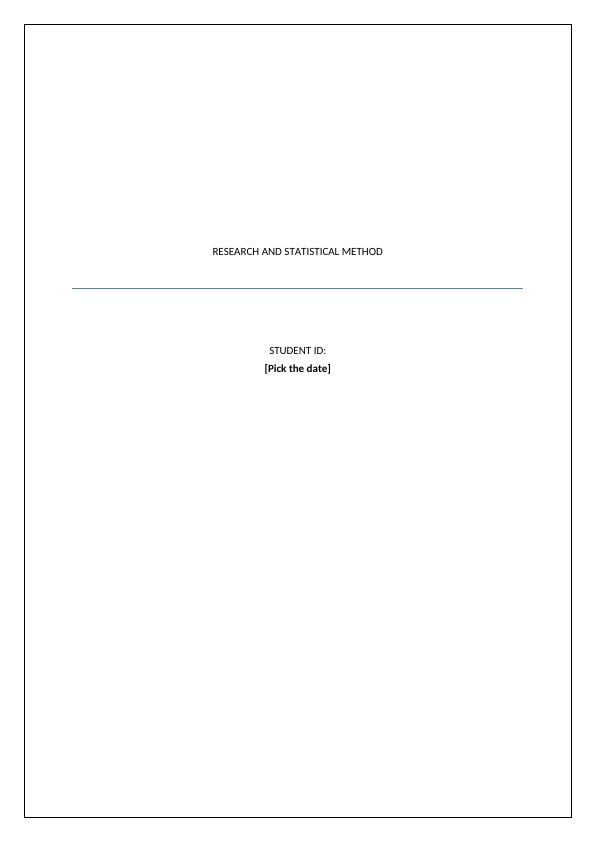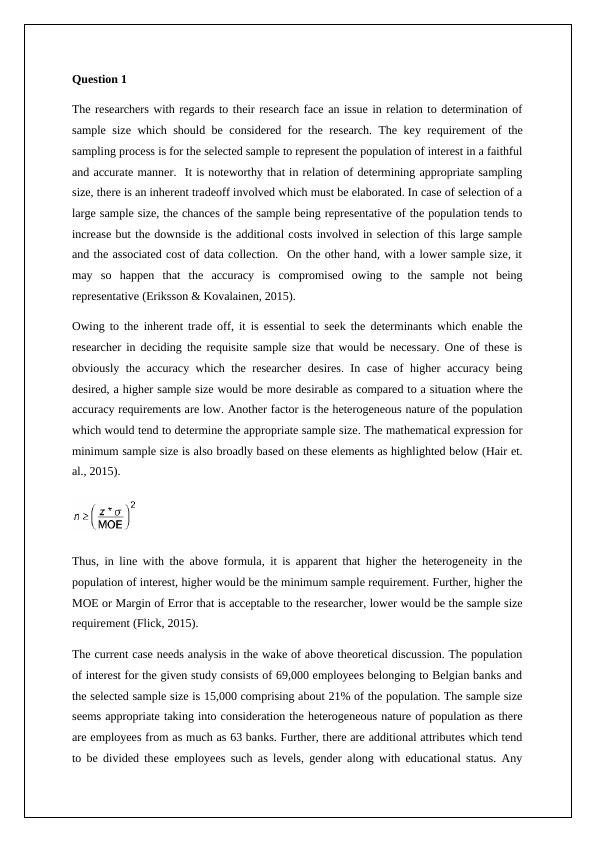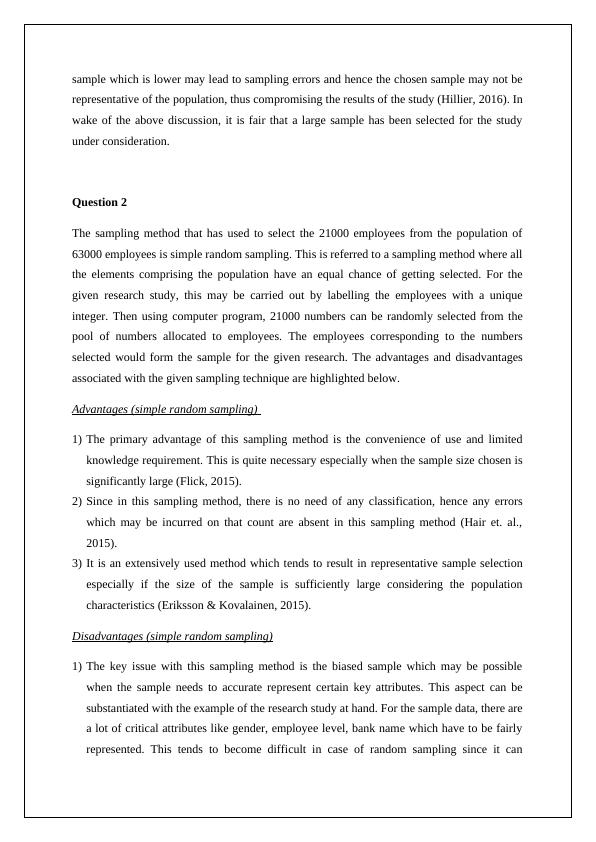Determining Sample Size and Sampling Method in Research
Investigating the association between employee's perception of quantitative and qualitative job insecurity with job satisfaction and psychological distress in the Belgium banking sector.
8 Pages2422 Words284 Views
Added on 2023-06-12
About This Document
This article discusses the determination of sample size and sampling method in research, highlighting the tradeoffs involved and the importance of accuracy and heterogeneity. It also explores the advantages and disadvantages of simple random sampling and the role of control variables. Additionally, it examines the reliability and validity of measures used in research and the correlational research design and its pros and cons.
Determining Sample Size and Sampling Method in Research
Investigating the association between employee's perception of quantitative and qualitative job insecurity with job satisfaction and psychological distress in the Belgium banking sector.
Added on 2023-06-12
ShareRelated Documents
End of preview
Want to access all the pages? Upload your documents or become a member.
Research and Statistical Method: Assignment
|8
|2402
|28
Research and Statistical Method - PDF
|8
|2295
|85
Research and Statistical Methods for Business Assignment
|9
|2465
|405
Research and Statistical Method: Sample Size, Sampling Method, Reliability, Control Variables, and Research Design
|5
|753
|221
Assignment | research and Statistical Method
|8
|2380
|17
Statistics | Questions and Answers
|9
|1072
|37



